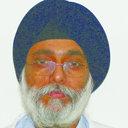The 1996 outbreak of dengue hemorrhagic fever in Delhi, India.
Mo kle
Abstrè
A major outbreak of dengue hemorrhagic fever (DHF) affected more than 10,000 people in Delhi and neighboring areas in 1996. The outbreak started in September, peaked in October to November and lasted till early December. The clinical and laboratory data of 515 adult patients admitted to Lok Nayak Hospital, New Delhi were reviewed. Fever (100%), myalgias and malaise (96%), abdominal pain (10.2%) and vomiting (8.7%) were the prominent presenting features. Hemorrhagic manifestations were seen in all patients- a positive tourniquet test (21.2%), scattered petechial rash (23.07%), confluent rash (2.7%), epistaxis (38.4%), gum bleeds (28.06%) and hematemesis (22.86%) being the major bleeding manifestations. Hepatomegaly was observed in 96% of the patients. Laboratory investigations revealed thrombocytopenia, hemoconcentration and leukopenia. Serological confirmation with a microcapture ELISA technic was done in 143/515 patients. The mortality rate was 6.6% and, multiple bleeding manifestations, severe thrombocytopenia, hypoproteinemia and dengue shock syndrome (DSS) were associated with a higher mortality.


